Black Cherry
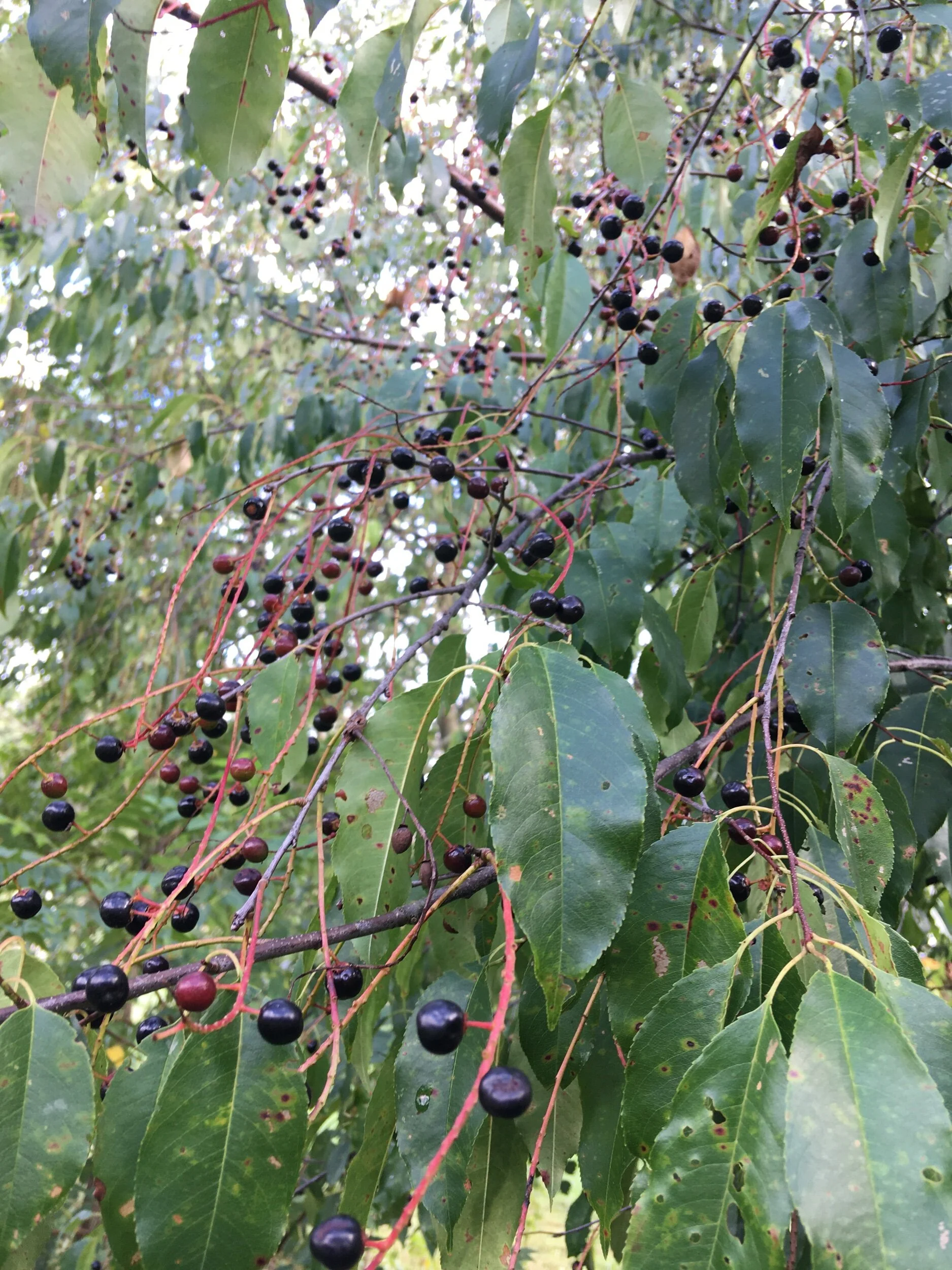
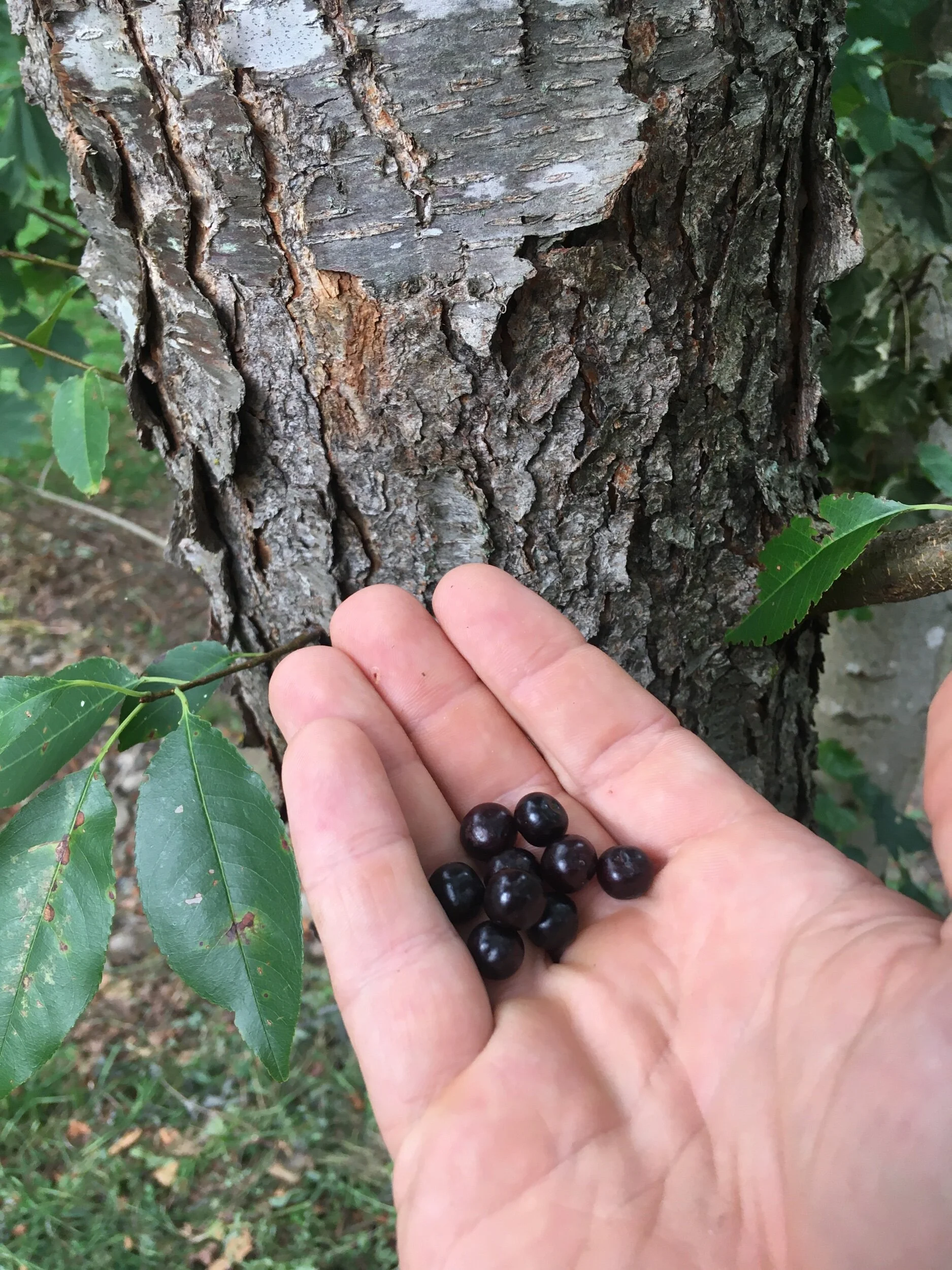
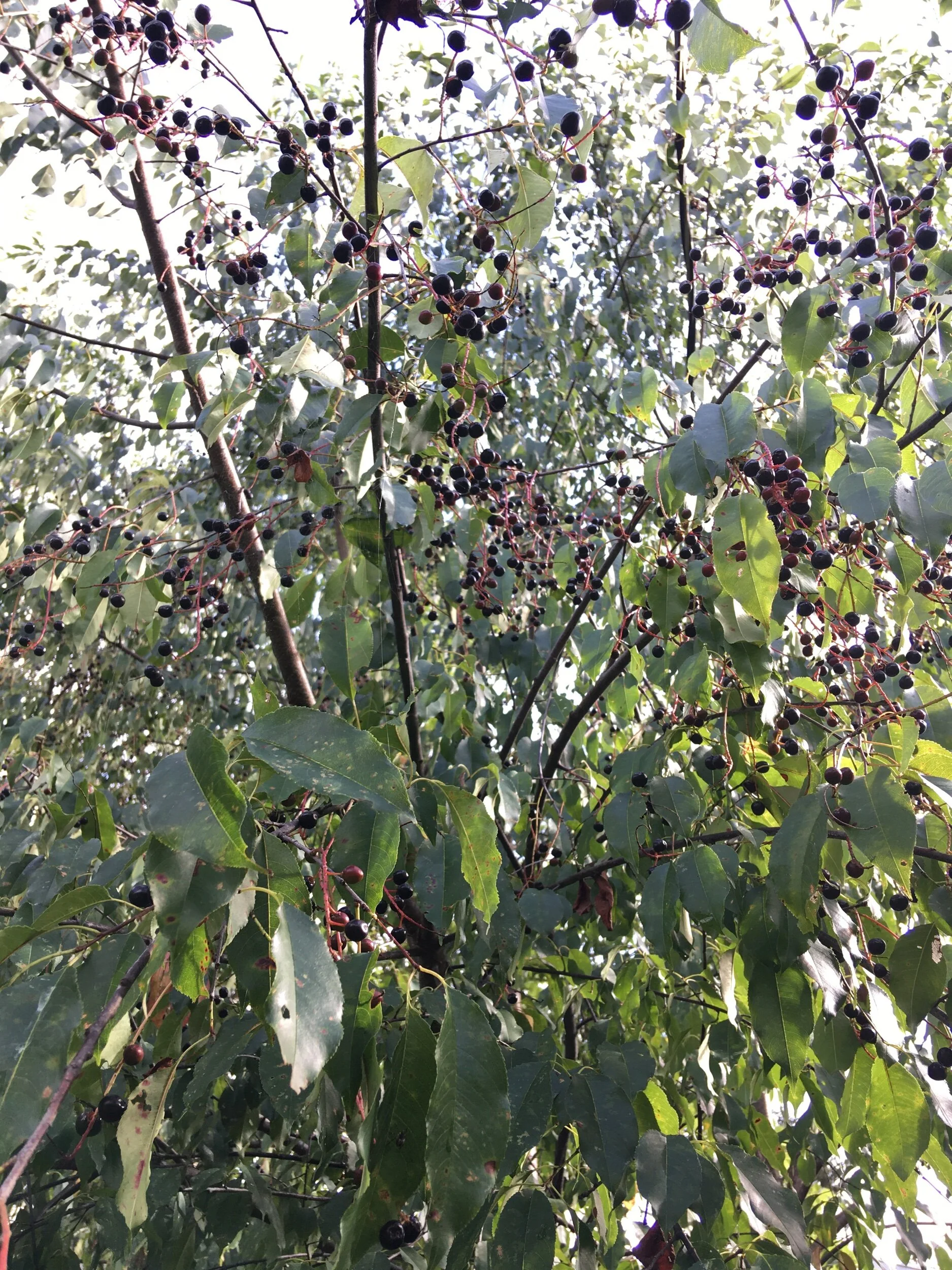
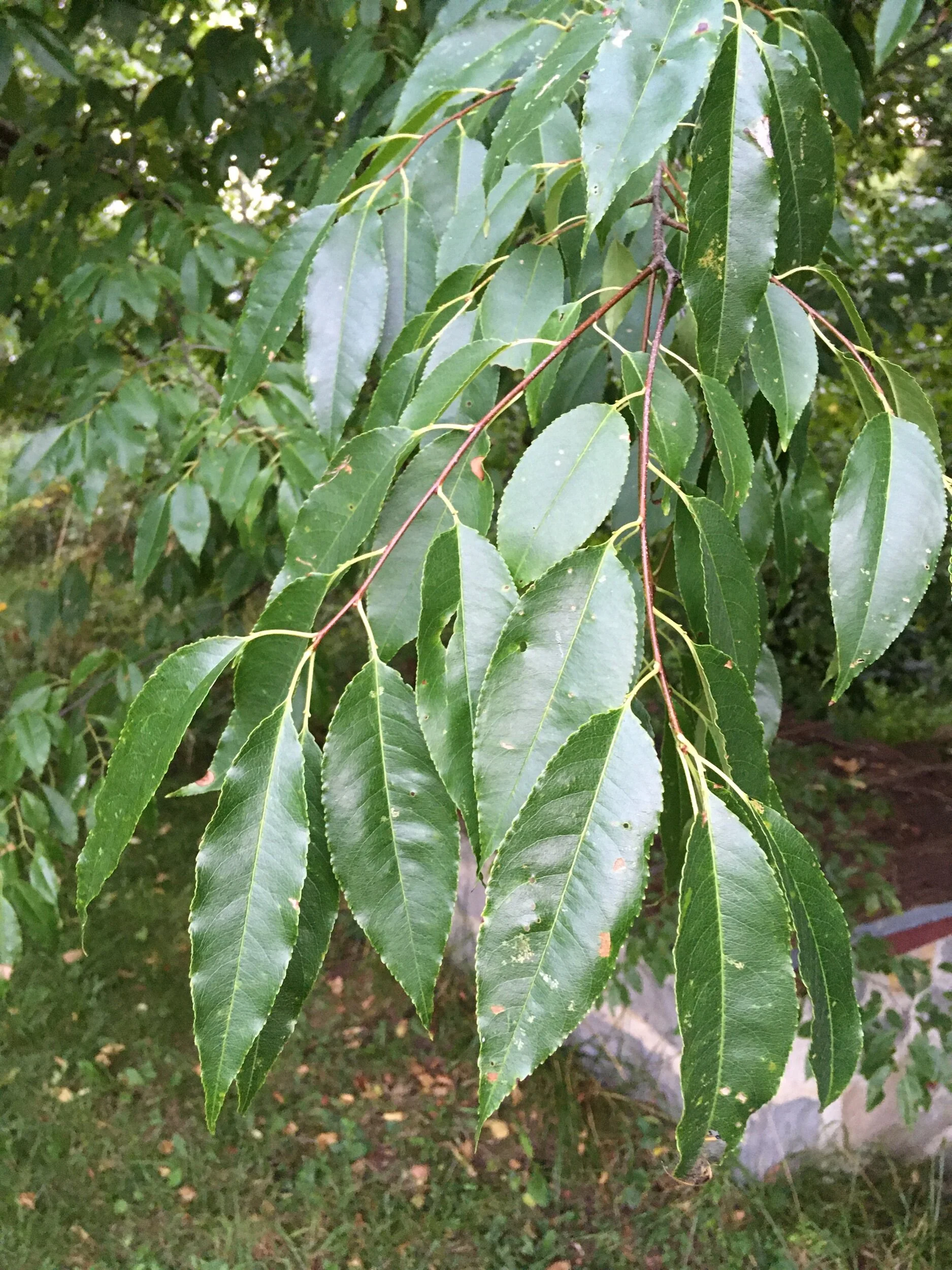
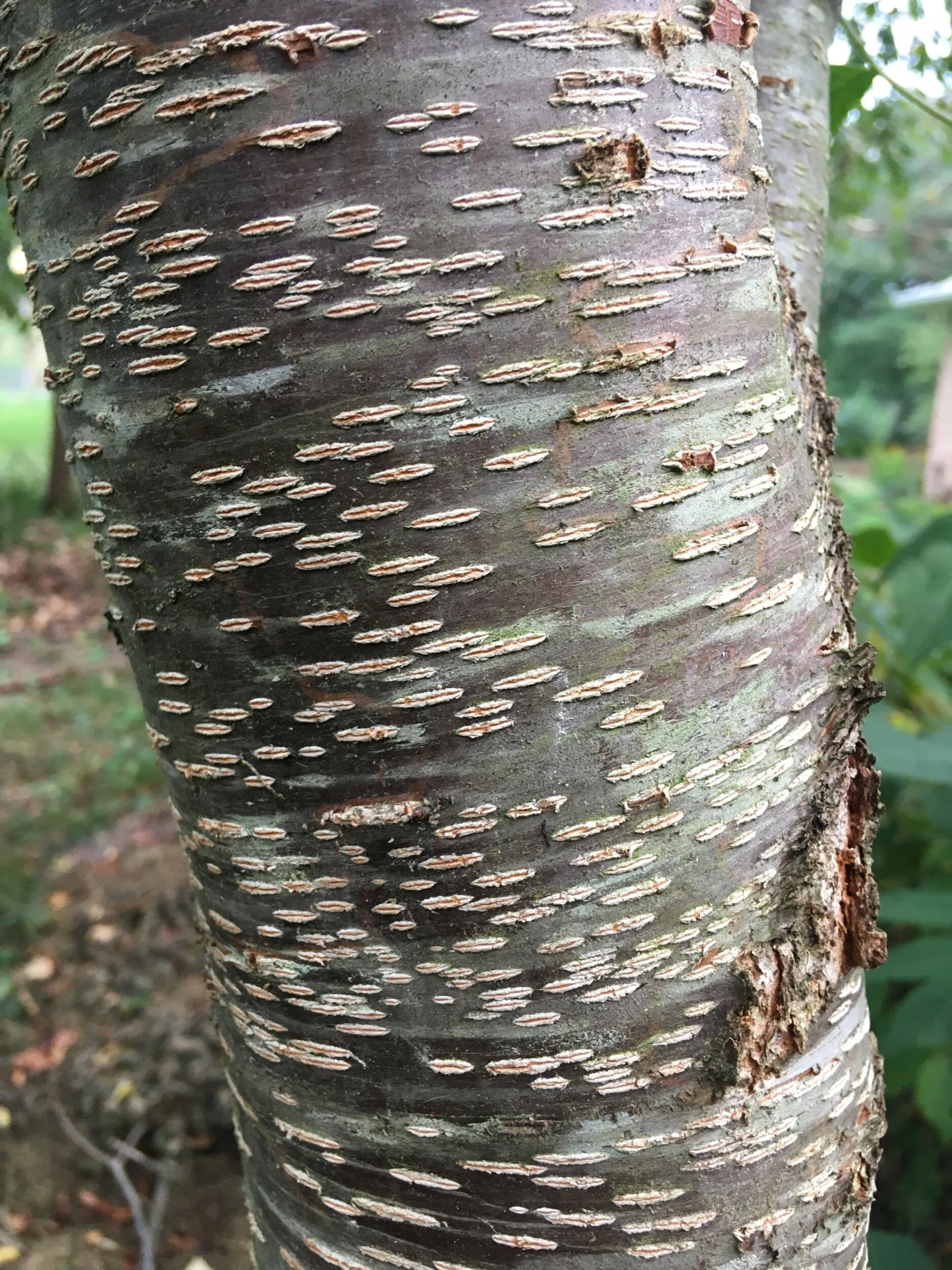
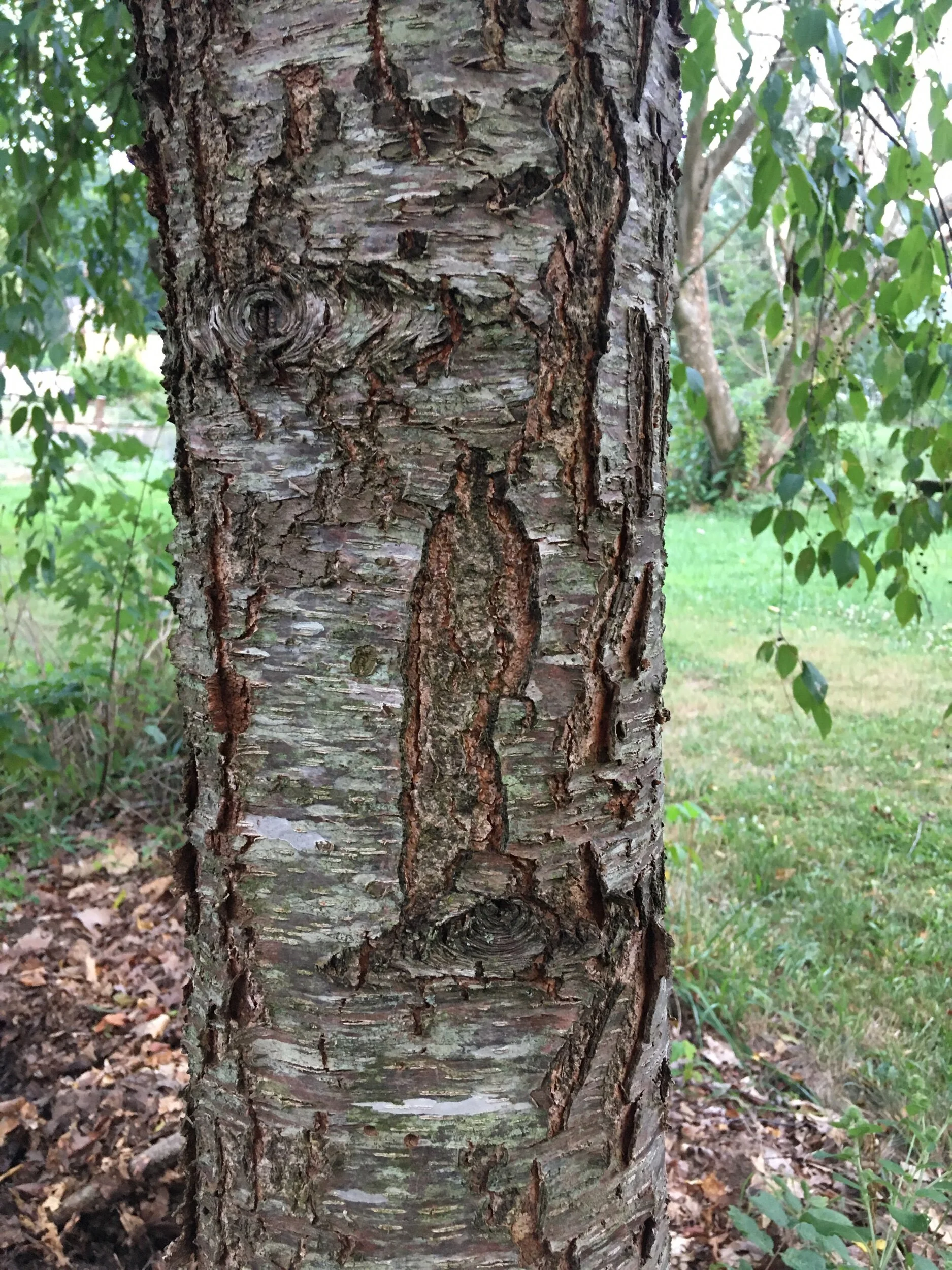


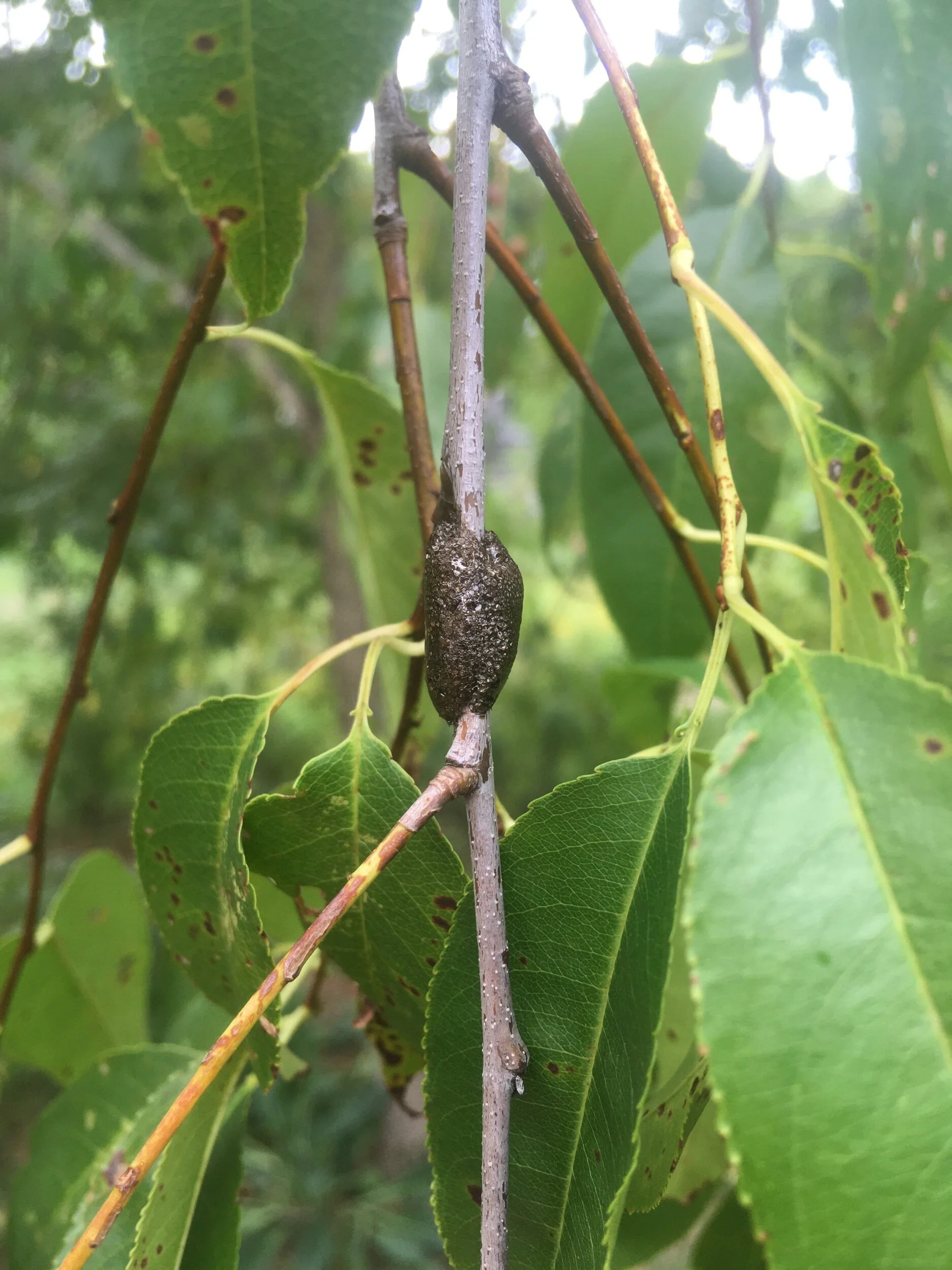

Black Cherry
Prunus serotina
Plant for sweet flower spikes and quick firewood coppice, for the mountain rum drupes, and for the keystone care and caterpillar hospitality!
Hardy from Zone 3-9. 50-80 feet tall, 30-60 feet wide.
Black Cherry pops up all over the place. Underneath Walnuts, in garden beds, imprinting the legacy of previous fencerows. In the past, we’ve tended to weed them out of nursery beds. But then we got to know the tree, dug a little deeper into their ecology and ethnobotany, and we’re hooked on this gorgeous generous tree.
The Prunus genus belongs to the Rose family, but this particular Prunus species isn’t closely related to cultivated sweet varieties. All those belong to the subgenus Cerasus, while Prunus serotina (Latin for evening or late ripening) is in the subgenus Padus along with Bird Cherry and Chokecherry. Black Cherry, also called Wild or Mountain, is the largest and most widely spread native Cherry, with at least five distinct geographical subspecies scattered across the great Eastern Woodlands, from Canada to the U.S. South, over to Texas and down into Mexican mountains and Guatemalan highlands.
These trees can live over 250 years, though they’re inclined to decline after 80 or 100. However, they respond vigorously to coppice even at 60. Black Cherry is susceptible to the fungal disease black knot, so we usually cut once we see the signs to rejuvenate young growth. The wood is a highly prized tight-grained timber, especially for cabinetry, toys, and tools. It’s also a satisfying firewood, particularly because it splits very easily, cures quickly, ignites effortlessly, and smells sweetly.
Smooth young bark is banded with lenticels, almost purple-brown in tone, but in age the bark seasons into dark cornflake chips, almost black in the forest understory. Cherry’s thin bark isn’t very fire-resilient, but sprouts bounce back from the base after a light burn. Many ethnobotanical traditions of Eastern Woodland tribes – from Chippewa to Cherokee, Lenape to Haudenosaunee – include Black Cherry root bark as medicinal wash for sores and ulcers, warm infusions for labor pains, and inner bark decoctions for fever, blood tonic, and cough syrup.
Cyanogenic glycosides concentrate in the twig, aromatic like almonds when snapped, as a protection against browsers and a caution towards careful use. But the sweet-smelling flowers draw us in. In April and May, small five-petaled white flowers unfurl on racemes, or flower spikes, dripping down pink-purple from narrow stems. A few dozen flowers on each raceme metamorphize into a drupe, reddish early on with a star-shaped base (an easy way to distinguish from Chokecherry). Each drupe ripens individually into purple-black from July through October, perhaps an adaptation to bird selection high up in the canopy. Robins and Cardinals, Thrushes and Woodpeckers, Grosbeaks and Grackles, Sparrows and Waxwings, Jays and Crows all flock to the fruit packed with antioxidants, vitamins, and minerals. The drupe is freestone, meaning the flesh cleans easily off the pit (another good distinction form Chokecherry). Those pits, like the bark, contain cyanogenic glycosides like amygdalin, which can become cyanide when chopped or chomped (similar to Apricot and Apple seeds). The flesh has these compounds too, but doesn’t have the enzymes that produce cyanide, so it’s perfectly fine to eat them (and don’t worry about a few pits either), and they’re fed on quite safely by Bear, Fox, Squirrel, Possum, Raccoon, Rabbit, and us. The fruit makes delicious jelly or juice, lending the tree the very appealing common name Rum Cherry.
Black Wild Mountain Rum Cherry was one of the first Native American trees planted into English gardens as early as the 1620s. They’ve since spread in Europe pretty aggressively with high germination rates, especially after passing through the digestive tracts of birds. Black Cherry starts producing seed around age 10, with heavy crops after age 30. They grow quickly from seed as an early succession tree, sprouting in oldfields, meadows, and woodland edges. They tolerate drought and salt, and their wide shallow roots offer aid for Appalachian surface mine reclamation.
Given their easy germination and fast growth, some farmers dismiss them as weed trees and remove them on sight. But that’s primarily because of their leaves, ovate and lance-like with fine teeth, shimmering in Summer and yellow and red in the Fall. They’re beautiful, and they too contain cyanogenic glycosides (they’re everywhere!), which convert to hydrogen cyanide (or Prussic acid) when the leaves wilt. That can be pretty toxic, and deadly in large amounts, to grazing animals. But fresh or dry the leaves are digestible. Deer eat mouthfuls of them, and we know goats who enjoy them in moderation.
Caterpillars adore those leaves more than anyone. Black Cherry hosts over 450 Lepidoptera species, like Eastern Tiger Swallowtail, Sphinx Moths, Silkmoths, and Viceroys. Larvae make hibernaculum, small silky shelters to overwinter on the bark. Eastern tent caterpillar forms communal nests woven between branches and often defoliates the entire tree, but sprouts can recover within a few weeks with enough bird predation. Caterpillars’ protein-rich bodies are a crucial way photosynthetic energy moves through an ecosystem: leaves eat sunlight, caterpillars eat leaves, loads of birds eat the caterpillars and then propagate and fertilize the forest. Black Cherry is therefore a keystone species with an outsized impact on the biodiversity of the local food web. Renowned entomologist Doug Tallamy places Black Cherry (along with other native Prunus plants) right after Oak as his top two ecological plants.
We propagate our Black Cherry from bird-sown seed scattered throughout our nursery beds. Can’t compete with their high germination digestion!